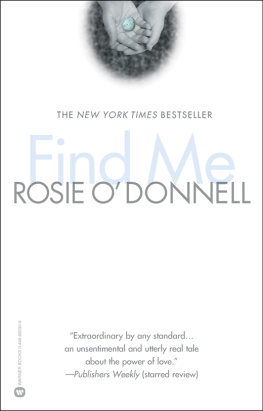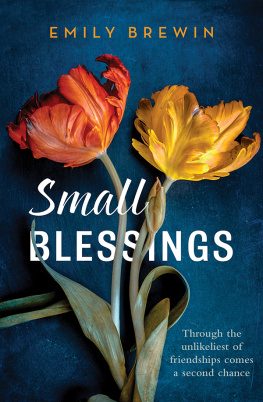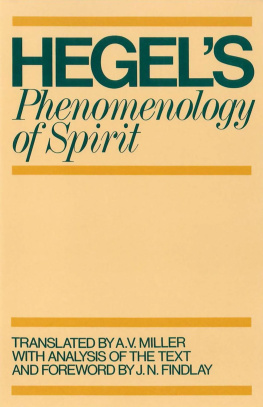
First published in the UK in 2017 by
Intellect, The Mill, Parnall Road, Fishponds, Bristol, BS16 3JG, UK
First published in the USA in 2017 by
Intellect, The University of Chicago Press, 1427 E. 60th Street,
Chicago, IL 60637, USA
Copyright 2017 Intellect Ltd
All rights reserved. No part of this publication may be reproduced,
stored in a retrieval system, or transmitted, in any form or by
any means, electronic, mechanical, photocopying, recording, or
otherwise, without written permission.
A catalogue record for this book is available from the
British Library.
Copy-editor: MPS Technologies
Cover designer: Alex Szalbot
Production manager: Katie Evans
Typesetting: Contentra Technologies
Indexer: Silvia Benvenuto
Print ISBN: 978-1-78320-834-0
ePDF ISBN: 978-1-78320-835-7
ePUB ISBN: 978-1-78320-836-4
Printed and bound by Page Bros, UK
Contents
Acknowledgements
I am deeply grateful for the many colleagues and friends who have offered their support, friendship, insight and guidance as I developed this work. Much of my research was conducted during my candidature as a doctoral student in the Department of Theatre and Performance Studies at the University of Sydney, a department singular in its collegiality and warmth. I am especially grateful to Ian Maxwell and Amanda Card, my supervisors for this project, whose feedback on my research was invaluable and whose encouragement was utterly indispensible.
A myriad of deepest thanks also go to Chris Hay, Kath Bicknell, Kyra Clarke and Zak Millar, Lindy Ma, Bel Clough, Meg Mason, Mark Coleman, Ash Sheehan, Nick DeNeff, Jamie Davidson, Stella North, Karen De Perthuis, Prudence Black, Agns Rocamora, Johannes Reponen, Nik Mijovic and Daniel Caulfield-Sriklad. My thanks to each of you run the gamut: from encouraging my ideas and sharing yours with me; for your friendship (and sympathy) when my writing hit a wall and for reading when my words found their feet again; for recommending books, thinkers and bloggers; for kindred conversations; and for helping me realize the look and feel of Fashademic and this book. Thank you all so very much.
I also wish to thank all the bloggers who shared their stories with me for this project Julie Fredrickson, Rosalind Jana, Danielle Meder, Jessica Quirk, Isabel Slone, Kayla Telford-Brock and Jamie Wdziekonski and to those who graciously gave me their permission to reproduce screenshots and images from their blog: Jane Aldridge, Laia Garcia, Brooke Kao, Ragini Nag Rao, Arabelle Sicardi, Vogue Australia and Leandra Medine and the team at Man Repeller. I am grateful, too, for the funding offered by the London College of Fashion to support the production of this book.
Finally, and most importantly, I wish to thank my parents Stuart and Sarah, and Granny Charlotte, for their constant and unconditional love and support. I couldnt have done this work and cant imagine valuing reading, thinking and writing as deeply as I do without your influence and encouragement.
Introduction
[] where street and interior are one, historical time is broken up into kaleidoscopic distractions and momentary come-ons, myriad displays of ephemera, thresholds for the passage for [] the ghosts of material things.
Howard Eiland and Kevin McLaughlin in Translators foreword to The Arcades Project (Benjamin 2002)
T he unfinished major project of Benjamins mature years (Buck-Morss 1989: iv), The Arcades Project Passagen-Werk) consists of a vast collection of cultural philosopher Walter Benjamins notes on nineteenth-century Paris. It was a project in which he sought to trace the origins of modernism namely Paris, the archetypal modern city in the materials of the nineteenth-century, the debris of mass culture that, for Benjamin, contained the source of philosophical truth (1989: iv).
Benjamins notes were collected (and published) in convolutes, a term which Eiland and McLaughlin trace to the German Konvolut. It refers to a larger or smaller assemblage [] of manuscripts or printed materials that belong together, in English also carrying the connotation of being in a convoluted form (Eiland and McLaughlin in Benjamin 2002: xiv). So it is with Benjamins work, as his expansive, itinerant ideas are compiled into dossiers around a theme Fashion, Boredom, Eternal Return, and The Seine, The Oldest Paris, for example in which readers find historical source material arranged next to Benjamins oblique notes to self, before stumbling onto excerpts of poetry by Baudelaire.
In the act of reading this work we partake in a kind of sedentary nerie as we move through the phantasmagorical city, Benjamins nineteenth-century Paris growing around us through his collated notes and fragments. When I first encountered The Arcades Project, I was struck by the similarity between reading the convolutes and reading personal style blogs, for reading style blogs is an uncannily similar experience. They too are comprised of fragments of text and images arranged around a theme blogposts that together constitute an image, albeit of a style blogger rather than an epoch, as in the case of Benjamins work.
Here, too, the stationary reader travels through a peopled landscape; what they encounter, however, is not the reimagined Paris of burgeoning modernism, but bloggers styled performances of self in a different liminal terrain, the spaces of their blogs. Here, too, as Jouhandeau observed of Benjamins work, the effect is to render the blogger as everyones contemporary (Jouhandeau in Benjamin 2002: 66), in relation to whom the reader is positioned, by the conversational mode of address characteristic of personal blogs, as a curious, engaged passer-by.
This ambulatory mode of reading is aided by the hyperlinks that pervade such blogs: coded texts functioning as portals to other webpages that populate in a new window. On style blogs these often link to a previous post, a friends blog or an online store, possibilities with tangential relevance to the original post, holding it in balance with a teeming network of websites, blogs, images and ideas. In fact, until recently, it was customary for style bloggers to keep a blogroll, or a list of hyperlinked titles of blogs that they liked, in the sidebar of their own. These titles often ran together like blank verse:
july stars
white lightning
sea of ghosts
fashiontoast
hard liquor, soft holes
geometric sleep
fashion pirate
what is reality anyway?
legends that, with a single click, would spirit the reader onto another blog written in a different voice, peopled with images of another blogger performing their personal style through outfit posts that ran down the page, back through time. For, once published, a blogpost remains anchored in its position in the reverse chronological order of a blog, while simultaneously existing in itself as a distinct cultural artefact of a bloggers opinions and outfit, as experienced in the day in which it was composed. And so the reader is peripatetic, conducted into vanished time (Benjamin 2002: 416), or the a-temporal continuous present of blogs, as well as intangible place, an imagined and fantastical world inhabited by a style bloggers digitally performed self.














